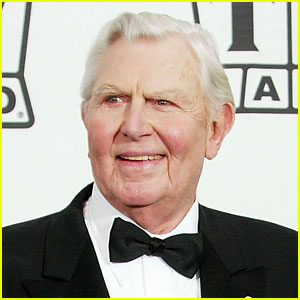

Linke.īut the show’s 35 million viewers would have been reassured to learn that even at the peak of his popularity, Mr. His career was tightly controlled by a personal manager, Richard O. Griffith was no happy rustic he enjoyed life in Hollywood and knew his way around a wine list. In 1983, in “Murder in Coweta County,” he played a chillingly wicked man who remains stone cold even as he is strapped into the electric chair. Griffith starred in no fewer than six movies with the words “murder” or “kill” in their titles. Before he fetched up in Mayberry, he was known for bringing authenticity to dark roles, beginning with the lead in “A Face in the Crowd,” in 1957, the story of a rough-hewn television personality who, in the clutches of his city-slicker handlers, becomes something of a megalomaniac.įrom the 1970s to the 1990s, Mr.
Andy griffith death cause movie#
“Rowan & Martin’s Laugh-In,” with its one-liners about drugs and Vietnam, and “The Mod Squad,” about an integrated trio of undercover officers, were grabbing a new audience.īut the characters in “The Andy Griffith Show” - Barney (Don Knotts), Gomer (Jim Nabors), Opie (Ron Howard, who went on to fame as a movie director), Aunt Bee (Frances Bavier) and the rest, including Gomer’s cousin Goober Pyle ( George Lindsey, who died in May) - have remained tantalizingly real to their fans, who continue to watch reruns on cable TV and online.Īndy Griffith was more complex than Andy Taylor, although the show was based on his hometown, Mount Airy, N.C.

Griffith had decided to move on, and so had the times. CBS made a lucrative offer for him to do one more season, and “The Andy Griffith Show” became the No. Griffith had decided to leave after the 1966-67 season to make movies. Its vision of rural simplicity (captured in its memorable theme song, whistled over the opening credits) was part of a TV trend that began with “The Real McCoys” on ABC in 1957 and later included “The Beverly Hillbillies,” “Petticoat Junction,” “Green Acres” and “Hee Haw.”īut by the late 1960s, the younger viewers networks prized were spurning corn pone, and Mr. The show imagined a reassuring world of fishin’ holes, ice cream socials and rock-hard family values during a decade that grew progressively tumultuous. 249, the show lived on in spinoff series, endless reruns and even Sunday school classes organized around its rustic moral lessons. 4 in the Nielsen ratings its first year and never fell below the Top 10. “The Andy Griffith Show,” seen Monday nights on CBS, was No. Meanwhile, as a widower, Andy raised a young son, Opie, and often went fishing with him. Every week he rode herd on a collection of eccentrics, among them his high-strung deputy, Barney Fife, and the simple-minded gas station attendant Gomer Pyle. And he delighted a later generation of television viewers in the 1980s and ’90s in the title role of the courtroom drama “ Matlock.”īut his fame was never as great as it was in the 1960s, when he starred for eight years as Andy Taylor, the sagacious sheriff of the make-believe town of Mayberry, N.C. Griffith was already a star - on Broadway in “No Time for Sergeants” and in Hollywood in Elia Kazan’s film “A Face in the Crowd” - when “ The Andy Griffith Show“ made its debut in the fall of 1960. His death was confirmed by the Dare County sheriff, Doug Doughtie. Andy Griffith, an actor whose folksy Southern manner charmed audiences for more than 50 years on Broadway, in movies, on albums and especially on television - most notably as the small-town sheriff on the long-running situation comedy that bore his name - died on Tuesday at his home on Roanoke Island in North Carolina.


 0 kommentar(er)
0 kommentar(er)
